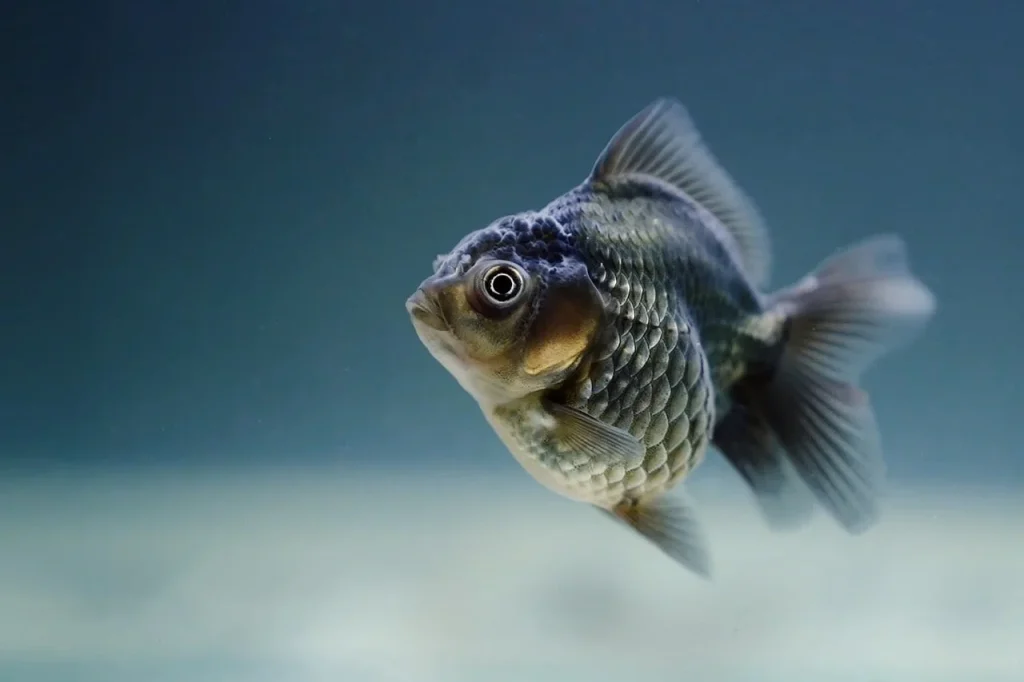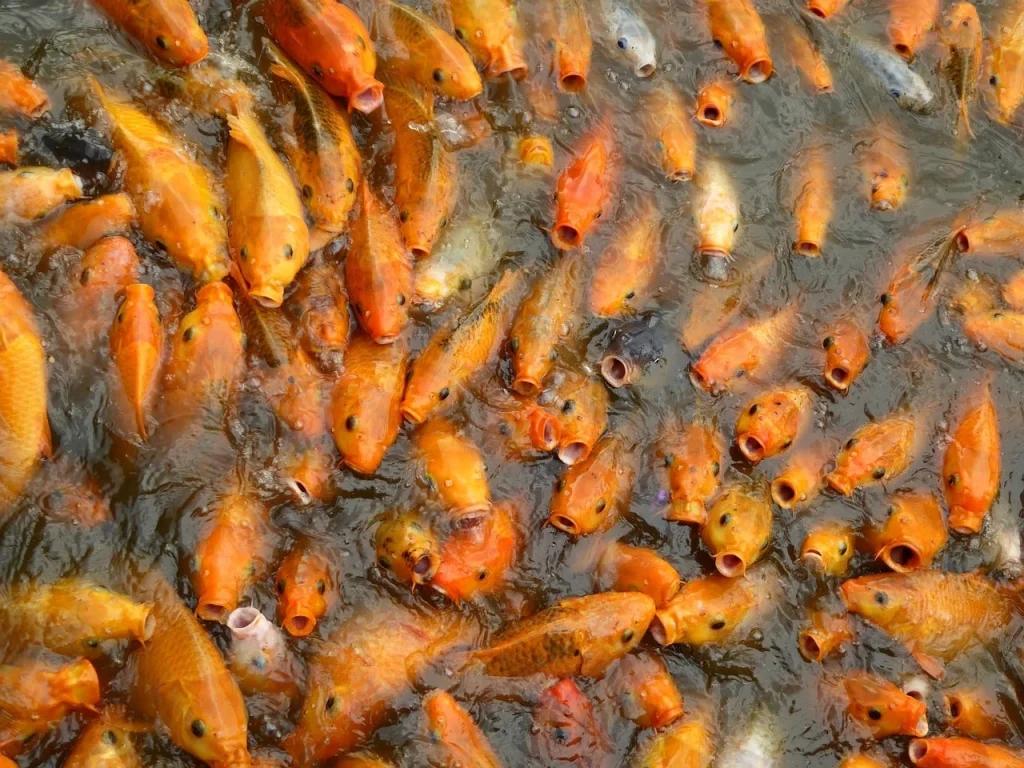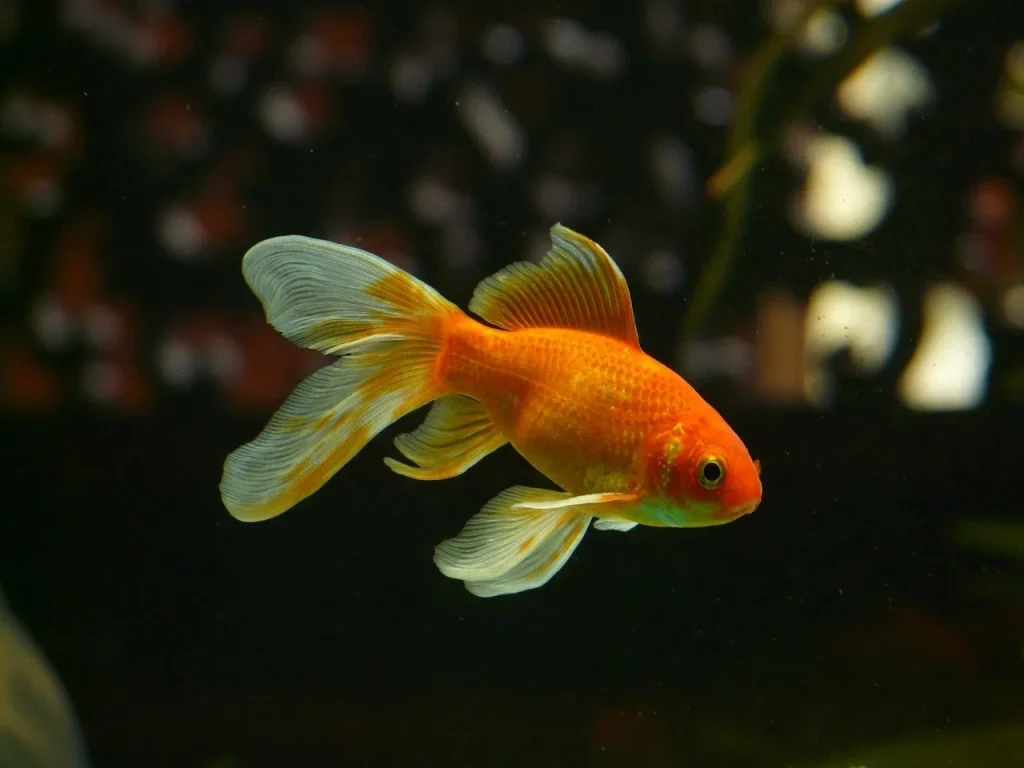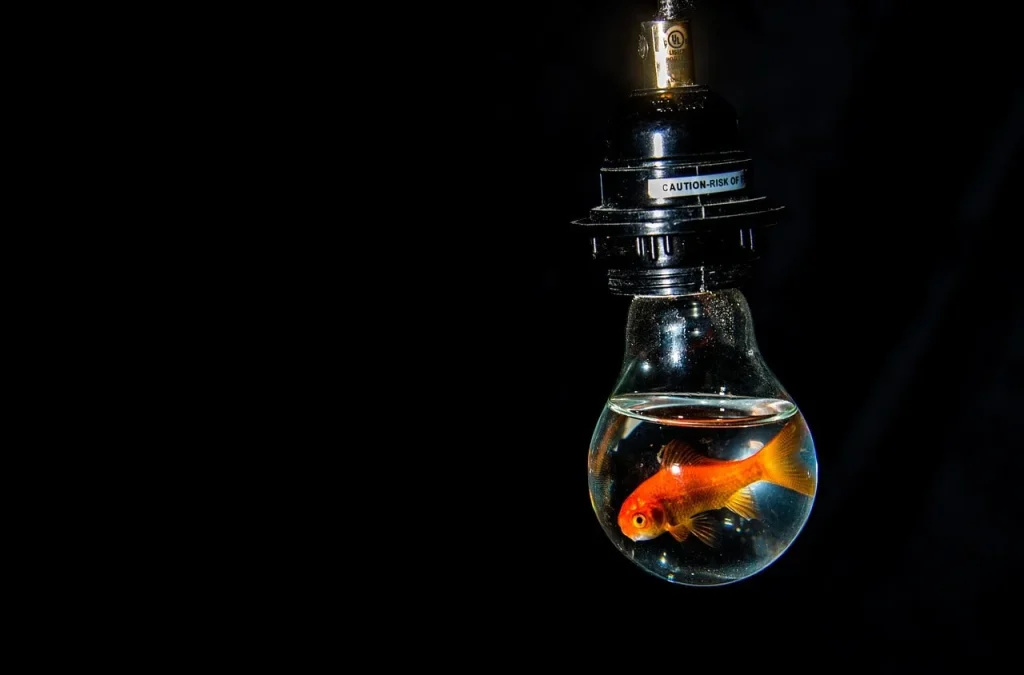What makes goldfish such beloved pets around the world? Is it their shimmering scales, their graceful swimming, or their surprisingly complex personalities? In this article, we will reveal some interesting facts about goldfish that will give you a deeper appreciation for these charming creatures.
You’ll learn about their history, their care, and some of the most intriguing aspects of their lives. Whether you already have a goldfish or are thinking about getting one, these facts will help you see them in a new light.
A goldfish is a hostage of your heart once you see them swim.
Haruki Murakami
Goldfish Facts
Let’s start our journey into the world of goldfish. Read these facts carefully if you want to ace the quiz at the end of the page.
- These fish can live up to 40 years under optimal conditions, defying common expectations of a short lifespan.
- They have a memory span of at least three months, much longer than the myth of only a few seconds.
- Selective breeding has led to over 200 different varieties, each with unique colors and shapes.
- Their eyesight allows them to see ultraviolet and infrared light, unlike humans.
- Goldfish can recognize and remember human faces, distinguishing between different people.
- They can produce sounds to communicate with each other, though these are inaudible to human ears.
- Their color can change due to exposure to sunlight, diet, and age.
- These fish have no stomachs, which means they need to eat small amounts of food frequently.
- They can survive in freezing temperatures by entering a state of hibernation.
- Their sense of smell is highly developed, helping them find food and recognize their environment.
- They produce a mucus coating on their skin that protects them from infections and parasites.
- Goldfish have been domesticated for over a thousand years, originating in ancient China.
- They can suffer from boredom and benefit from having varied environments and companions.

- Some varieties can grow up to 18 inches long in large, uncrowded environments.
- Their hearing is facilitated by their swim bladders, which help amplify sounds.
- They can regenerate damaged tissue and fins, often fully recovering from injuries.
- In the wild, they can become an invasive species, outcompeting native fish for resources.
- These fish have a high tolerance for low oxygen levels, thanks to their efficient gills.
- They can be trained to perform tricks, such as swimming through hoops and playing soccer.
- Some goldfish can develop “wen,” a fleshy growth on their heads that requires regular maintenance.
- Their scales reflect light in a way that can make them appear to glow in certain conditions.
- They have been used in scientific research due to their robust health and ease of care.
- These fish can recognize different types of music and can even be taught to differentiate between composers.
- In Japan, they are a symbol of prosperity and good fortune, often featured in festivals.
- Goldfish are capable of seeing polarized light, which helps them detect predators and prey.
- They possess a lateral line system that detects vibrations and movements in the water.
- Some types have been bred to have bubble-like eyes, which can be delicate and prone to injury.
- Their reproductive cycle includes laying hundreds of eggs at a time, though only a few may survive to adulthood.

- They can be kept in ponds and can coexist with other fish species under the right conditions.
- Their diet in the wild consists of plants, insects, and small crustaceans, reflecting their omnivorous nature.
- They have a unique method of oxygenating their blood during hypoxic conditions by converting carbohydrates into alcohol, which is excreted through their gills.
- Some varieties have double tails, which give them a distinctive and graceful swimming style.
- Goldfish can exhibit behaviors such as “flashing,” where they rub against surfaces to relieve itching caused by parasites.
- They have been featured in artwork and literature throughout history, symbolizing wealth and beauty.
- These fish can jump out of their tanks if conditions are not optimal, highlighting the need for a secure lid.
- Goldfish produce waste that contains ammonia, necessitating regular water changes to maintain water quality.
- They can develop “floaty” issues if fed a diet too rich in certain types of carbohydrates.
- They have been known to survive without food for up to two weeks, though this is not recommended.

- Their eyes lack eyelids, meaning they sleep with their eyes open.
- Goldfish can live harmoniously with certain types of snails, which help keep the tank clean.
- They exhibit schooling behavior, preferring the company of other goldfish to being alone.
- Their tanks require aeration and filtration systems to mimic their natural environment.
- They can be affected by temperature changes, preferring stable, moderate conditions.
- Some goldfish can develop white spots when stressed, a condition known as ich.
- They are popular subjects in feng shui, believed to attract positive energy and harmony.
- Goldfish can suffer from various diseases, including swim bladder disorder and fin rot, requiring careful monitoring.
- They have a wide range of facial expressions, which can indicate their mood and health.
- These fish can imprint on their owners, reacting excitedly when they approach the tank.
- Goldfish can adapt to a wide range of pH levels, though they prefer slightly alkaline water.
- In some cultures, releasing goldfish into the wild is considered a way to gain merit, although this practice can harm local ecosystems.
Goldfish Myths

Now that we know the facts, let’s challenge the myths about goldfish. It’s time to separate fact from fiction.
- Goldfish Have a Three-Second Memory
They are often underrated in terms of memory. It has been demonstrated that they can remember things for months, not just a few seconds. Training through positive reinforcement can be remembered by them, indicating a more sophisticated memory capacity. - Goldfish Can Only Grow to a Few Inches
The size to which a goldfish can grow is greatly influenced by its environment. In spacious tanks or ponds, they are capable of reaching up to a foot in length, a stark contrast to the common belief that confines them to mere inches. - Goldfish Do Not Require Much Care
Contrary to popular belief, they require significant care and a properly maintained environment. The quality of water needs to be regularly checked and maintained, and they benefit from a varied diet, not just flakes. - Goldfish Are Loners
They are actually quite social creatures and are observed to exhibit better health and more activity when housed with tank mates. It is preferred by them to swim and interact with other goldfish, enhancing their overall well-being. - Goldfish Can Live in Any Water Condition
Sensitive to their water conditions, they thrive when specific parameters are met. Ammonia and nitrate levels must be kept low, and the water temperature needs to be stable, emphasizing the necessity for regular water testing and management.
Goldfish Quotes

We continue to the next section, the quotes. You can always share more in the comments and I will add them to the list as well.
The goldfish teaches you patience and the art of making a wish.
Richard Bach
Richard Bach reflects on how goldfish, often associated with wish-making in various cultures, encourage patience and hope in people.
Goldfish are ordinary creatures that teach us extraordinary lessons about life.
David Viscott
David Viscott emphasizes that even simple, common pets like goldfish can provide profound insights into life’s complexities.
To know a goldfish, watch them swim in silence and you’ll understand their music.
Joyce Carol Oates
Joyce Carol Oates suggests that observing a goldfish in the quiet serenity of its movements can reveal the subtle, rhythmic beauty they embody, akin to music.
If you treat a goldfish with respect, it reflects how you treat the world.
Maya Angelou
Maya Angelou uses the metaphor of a goldfish to express the idea that kindness and respect to even the smallest creature mirrors one’s behavior towards the larger world.
Goldfish are living proof that beauty needs no words.
Deborah Norville
Deborah Norville speaks to the silent beauty of goldfish, which captivates and communicates without the need for speech.
Goldfish FAQ

Before we reach the quiz let’s first read some frequently asked questions about goldfish.
- Can goldfish see in the dark?
They have limited night vision. While they can’t see in complete darkness, they are better equipped to handle lower light conditions compared to humans. This allows them to navigate their environment even in dim lighting. - Are goldfish edible?
Yes, they are technically edible and are safe to eat for most people. However, they are not commonly consumed due to their small size and the fact that they are primarily kept as pets. - Can goldfish see color?
Absolutely! They have excellent color vision. In fact, they can see more colors than humans because they can perceive both ultraviolet and infrared light, which adds to their ability to distinguish their surroundings. - Are goldfish smart?
They are surprisingly intelligent. They can be trained to recognize different humans, perform tricks, and remember routines for several months. They’re more aware and responsive than many people might think. - Can goldfish live with other fish?
Yes, they can coexist with other fish, but it’s important to choose tank mates carefully. They do best with fish that share similar water condition needs and that are not aggressive, as goldfish can be quite peaceful and slow-moving.
Goldfish Trivia

Welcome to the Ultimate Goldfish Quiz! Dive in and test your knowledge, but be warned: get them all wrong and you might just find your bathtub mysteriously filled with goldfish crackers!
Conclusion
As we’ve seen, goldfish aren’t just simple pets. They are complex animals with specific needs that, when met, can help them live long, vibrant lives. From their need for spacious tanks to their impressive memory, goldfish continue to surprise and delight us.
Ensuring they have the right environment and care is crucial for their well-being. So, take a moment to appreciate these wonderful creatures and all they offer to our lives. Till next time, stay curious and explore more. Cheers.


